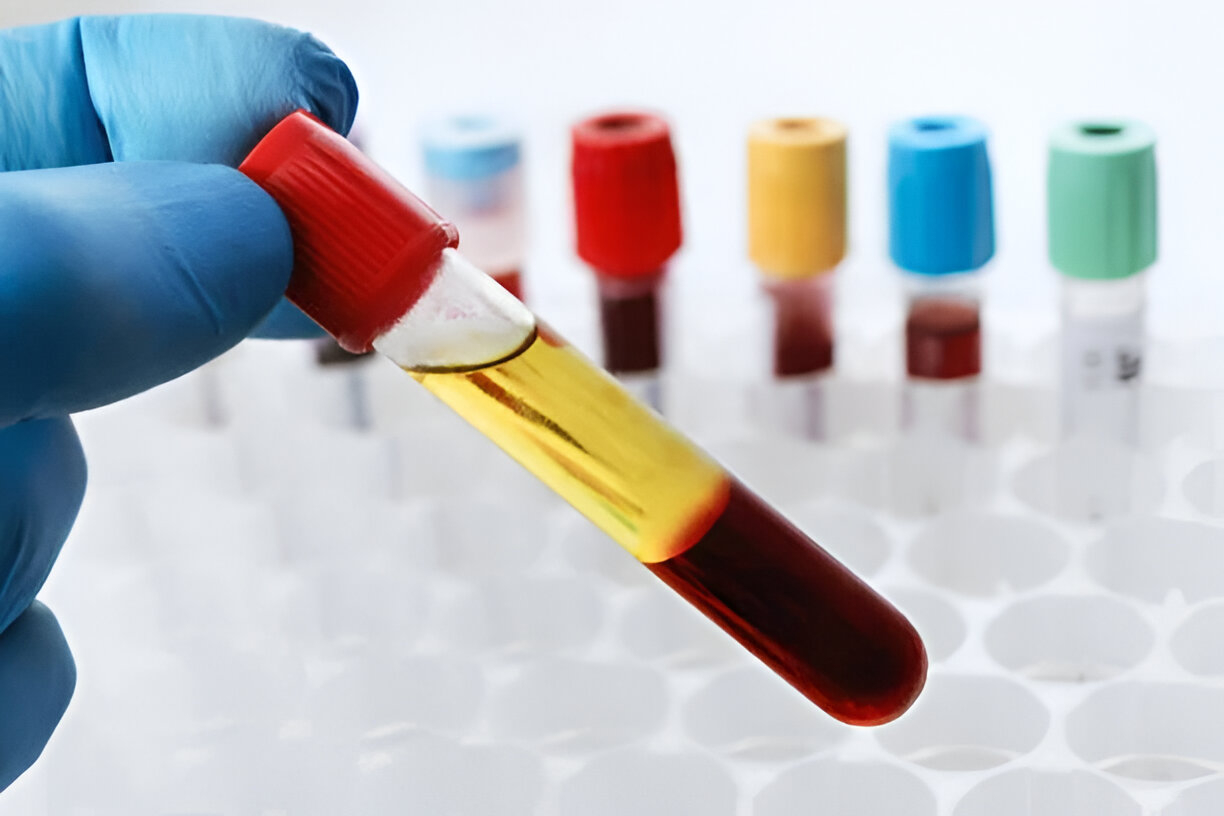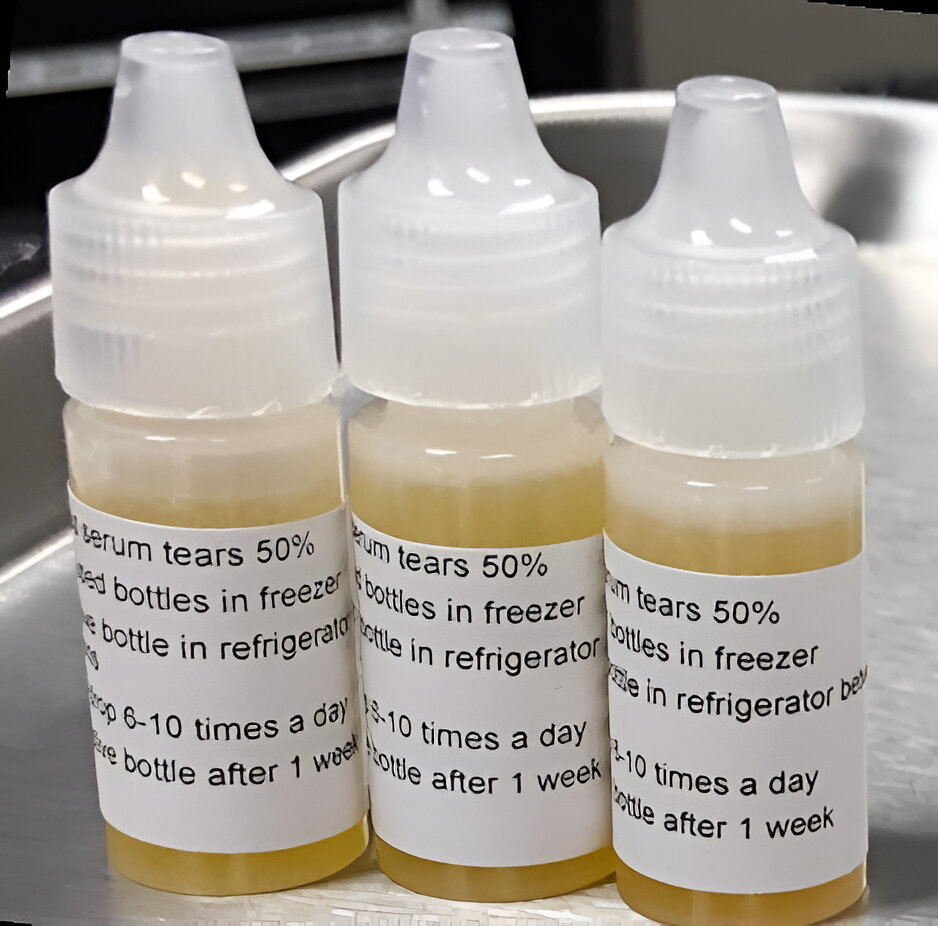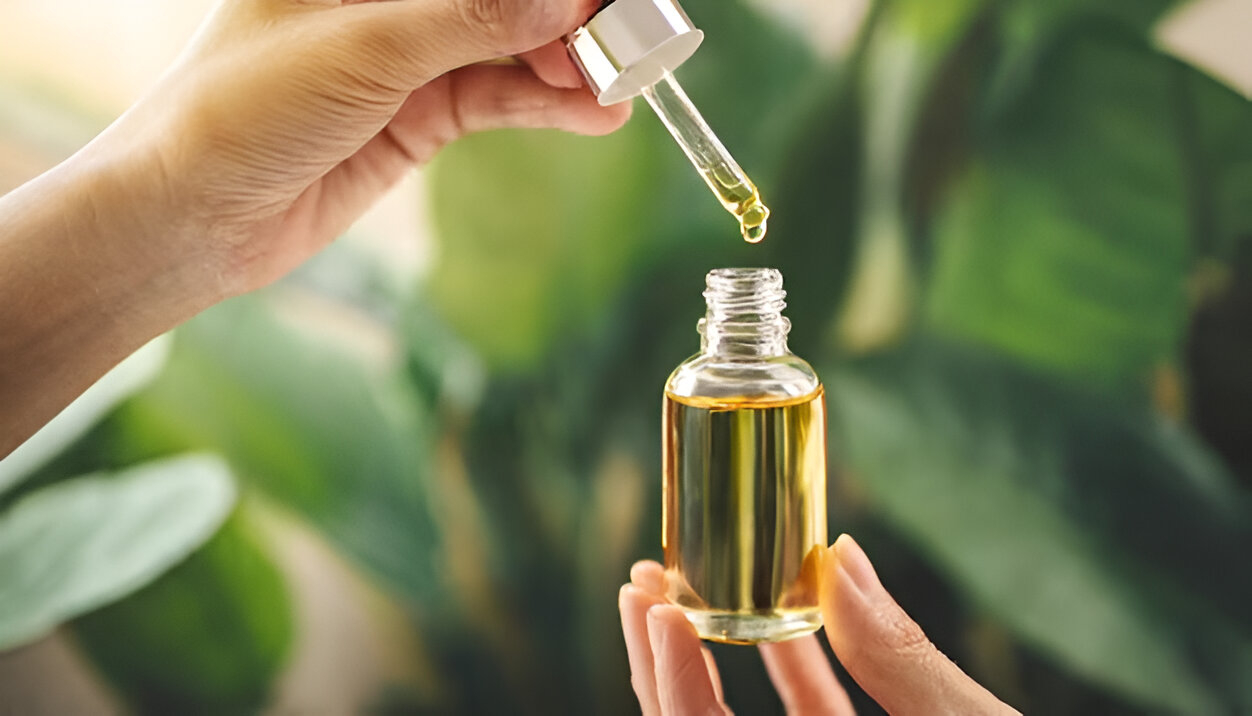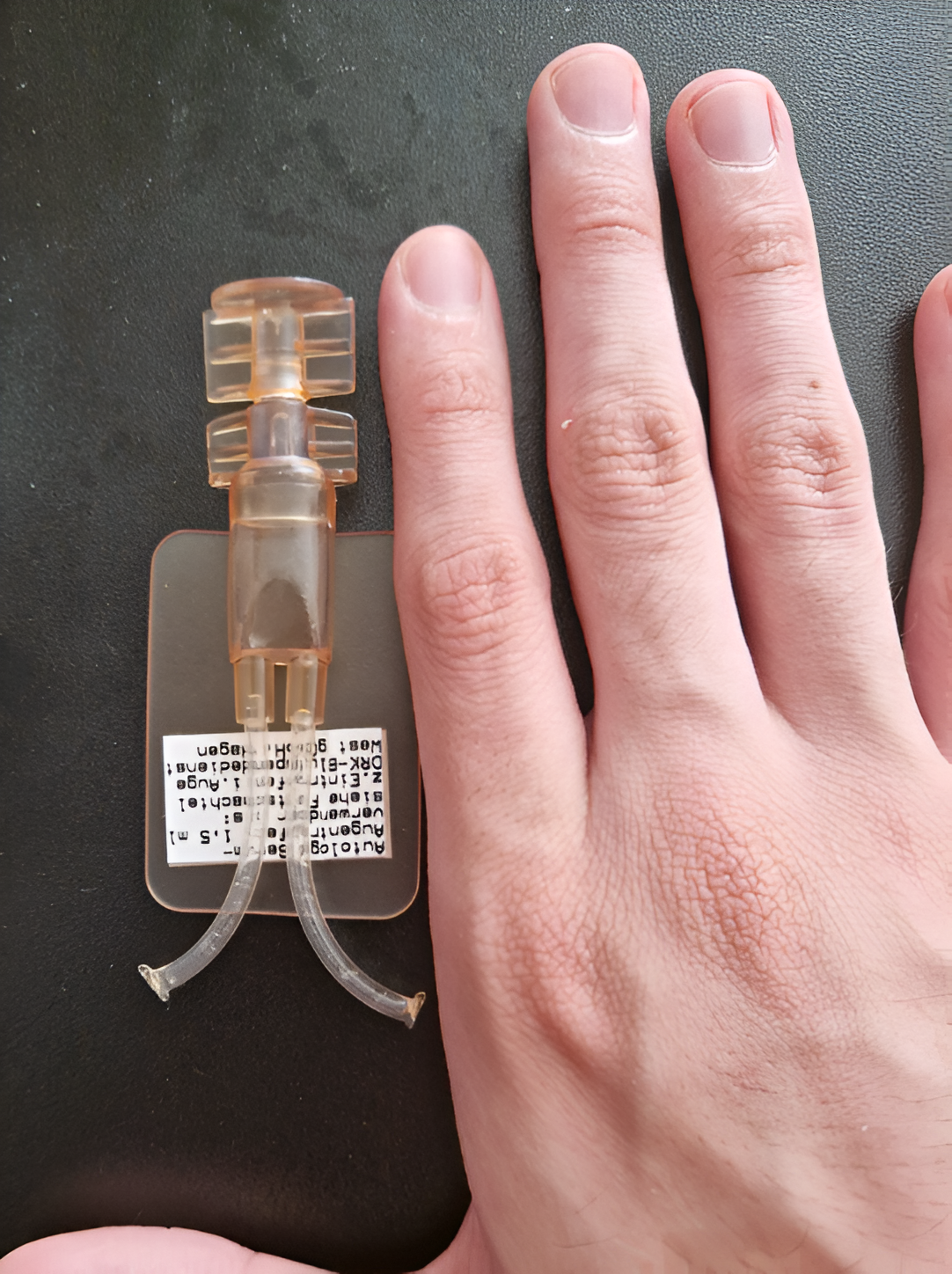
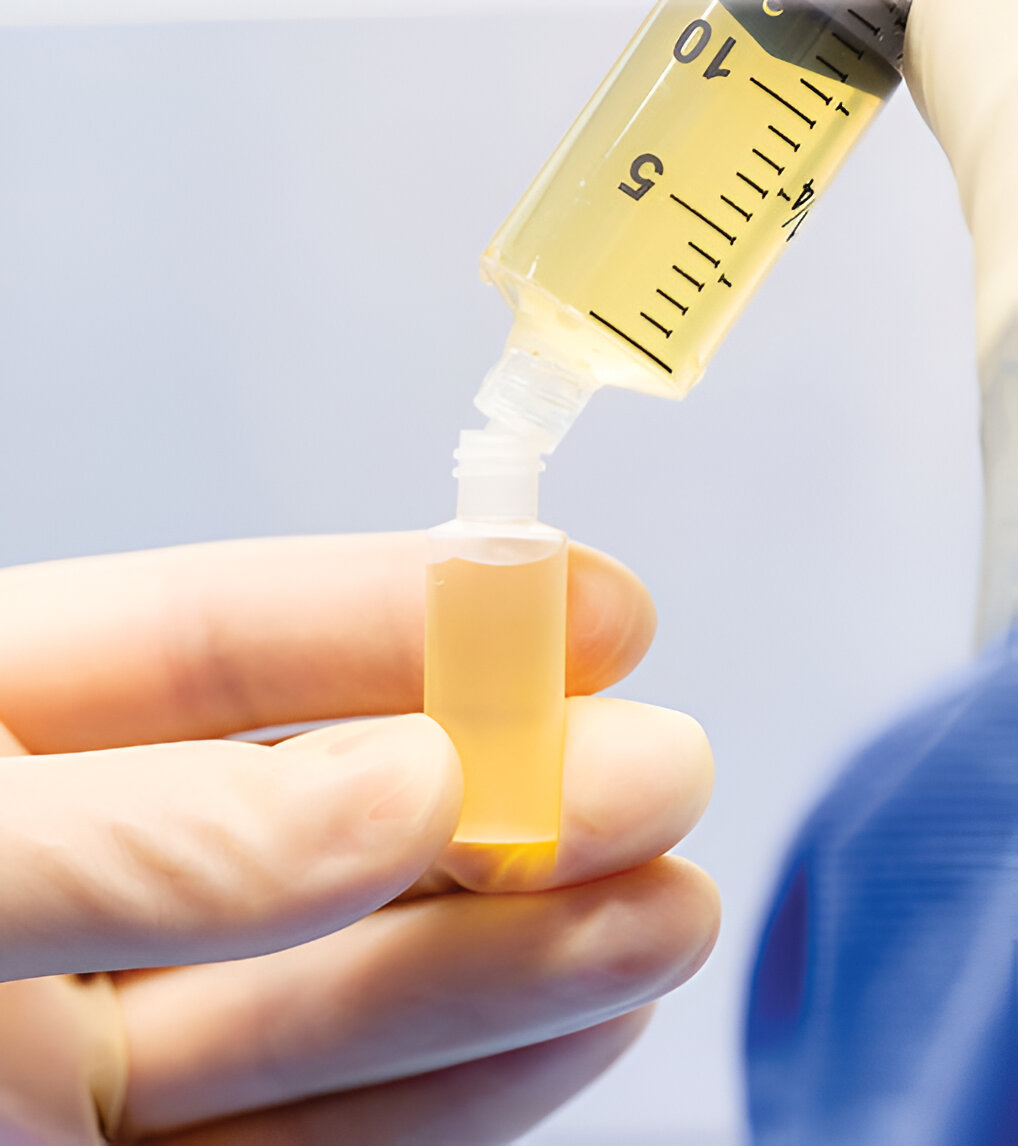 Dry Eye Disease (DED) can range from mild discomfort to a debilitating condition that interferes with vision, daily activities, and overall quality of life. While artificial tears and anti-inflammatory drops are the mainstays of treatment, some patients experience persistent symptoms despite standard therapy.
Dry Eye Disease (DED) can range from mild discomfort to a debilitating condition that interferes with vision, daily activities, and overall quality of life. While artificial tears and anti-inflammatory drops are the mainstays of treatment, some patients experience persistent symptoms despite standard therapy.
That’s where Autologous Serum Eye Drops (ASEDs) come in—a personalized, biologically-rich solution made from the patient’s own blood. This blog dives into what they are, how they work, and when they’re used in managing dry eye.
What Are Autologous Serum Eye Drops?
Autologous serum eye drops are custom-made eye drops derived from the patient’s own blood, prepared by separating the serum (the fluid part of blood after removing cells and clotting factors) and diluting it with sterile saline.
This serum contains growth factors, vitamins, immunoglobulins, and other bioactive components that are naturally present in healthy tears—making it a biologically closer match to the real thing than any artificial tear.
Why Use Autologous Serum in Dry Eye?
The main idea is to mimic and enhance natural tear composition. While artificial tears provide lubrication, they lack the healing and regenerative components found in natural tears.
ASEDs contain:
-
Epidermal growth factor (EGF) – promotes epithelial healing
-
Transforming growth factor-beta (TGF-β) – controls inflammation
-
Vitamin A – essential for ocular surface integrity
-
Albumin – for osmotic balance
-
Fibronectin – helps in cell adhesion and wound repair
These components aid in reducing ocular surface damage, restoring tear film stability, and improving symptoms in patients with moderate-to-severe or refractory dry eye.
Indications for ASEDs
Autologous serum is not a first-line therapy. It’s reserved for moderate to severe or treatment-resistant cases, especially when there’s significant ocular surface compromise.
Common Indications:
-
Severe Dry Eye Disease (especially associated with Sjögren’s syndrome)
-
Neurotrophic keratitis
-
Persistent epithelial defects
-
Post-LASIK dry eye
-
Graft-versus-host disease (GVHD) related dry eye
-
Stevens-Johnson syndrome and ocular cicatricial pemphigoid (under specialist care)
How Are ASEDs Prepared?
-
Blood Collection: 20–100 mL of venous blood is drawn from the patient.
-
Centrifugation: Blood is spun to separate serum.
-
Dilution: Serum is typically diluted to 20% with sterile saline (some use 100% undiluted for severe cases).
-
Bottling & Storage: Drops are dispensed in sterile vials, stored in the freezer, and thawed before use.
A strict aseptic technique is crucial to avoid contamination.
How to Use ASEDs
-
Usually 1 drop in each eye 6–8 times per day, depending on severity and doctor’s recommendation.
-
Vials are stored frozen and kept in the refrigerator when in use. Each opened vial should be discarded after 24 hours to reduce infection risk.
Advantages of Autologous Serum Eye Drops
-
No preservatives
-
Reduced inflammation
-
Enhanced epithelial healing
-
Safe for long-term use (if prepared under proper sterile conditions)
Limitations and Challenges
-
Not readily available in all clinics; requires coordination with a specialized compounding lab or hospital.
-
Cost can be high (due to preparation and storage).
-
Requires patient compliance with handling and storage.
-
Not ideal for immunocompromised individuals or those with infectious bloodborne diseases.
What Do Studies Say?
Several studies have shown that autologous serum:
-
Improves both subjective symptoms (burning, foreign body sensation, blurring)
-
Enhances objective signs (TBUT, corneal staining, Schirmer’s score)
-
Promotes faster epithelial healing in persistent epithelial defects and neurotrophic keratitis
The American Academy of Ophthalmology (AAO) and TFOS DEWS II report recognize ASEDs as a valuable treatment option in the stepwise management of dry eye disease.
Conclusion: A Personalized Touch for Complex Dry Eye
Autologous serum eye drops offer a powerful, personalized therapy for patients with dry eye who haven’t found relief from conventional treatments. By harnessing the healing power of the patient’s own serum, this therapy not only lubricates but restores the ocular surface.
While not suitable for every case, when appropriately used, ASEDs can be a game-changer in restoring comfort and vision quality for those battling chronic or severe dry eye.
Sharing an experience…
Here is a user of Antaloge Serum explaining his experience in reddit:
Hi everyone,
I wanted to share my experience as a 27-year-old computer science PhD student who has been struggling with dry eyes for about five years. During this time, I’ve tried just about every treatment available here in Germany—over-the-counter eye drops, ointments, sleep masks, punctal plugs, Ikervis, and even autologous serum eye drops.
Out of all these, Ikervis helped, but the real game-changer was the autologous serum eye drops. They genuinely changed my life. I went from seriously considering dropping out of undergrad because the dryness was unbearable, to completing my master’s and now pursuing a PhD.
I still deal with dry eyes and occasionally go through phases where I can’t do any computer work at all. But overall, my condition is so much more manageable compared to before starting the autologous serum eye drops.
If you’ve tried everything else and nothing seems to help, I can’t recommend autologous serum eye drops enough. They truly made a world of difference for me.
Hope this helps someone out there!
Edit: this is what the applier looks like. It’s a 1.5ml that I take out of the fridge and use it for the rest of the day.

